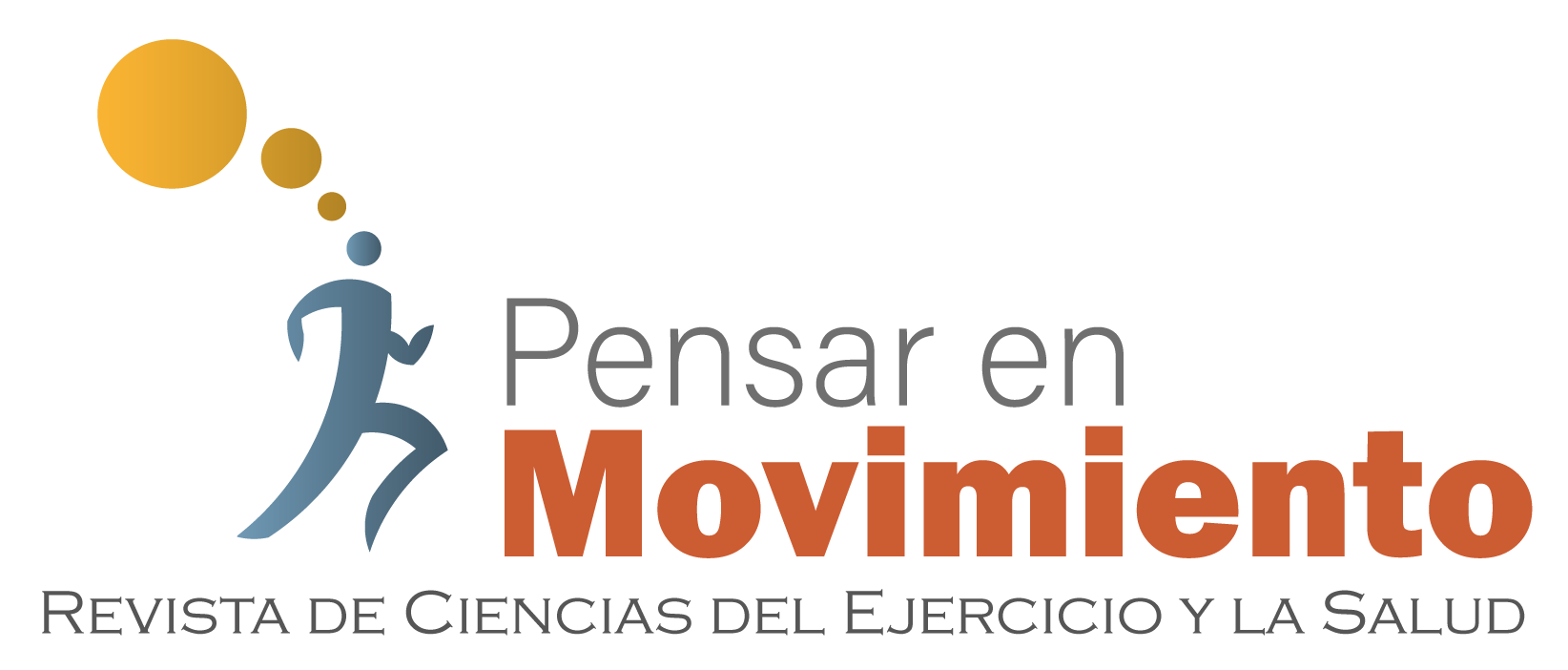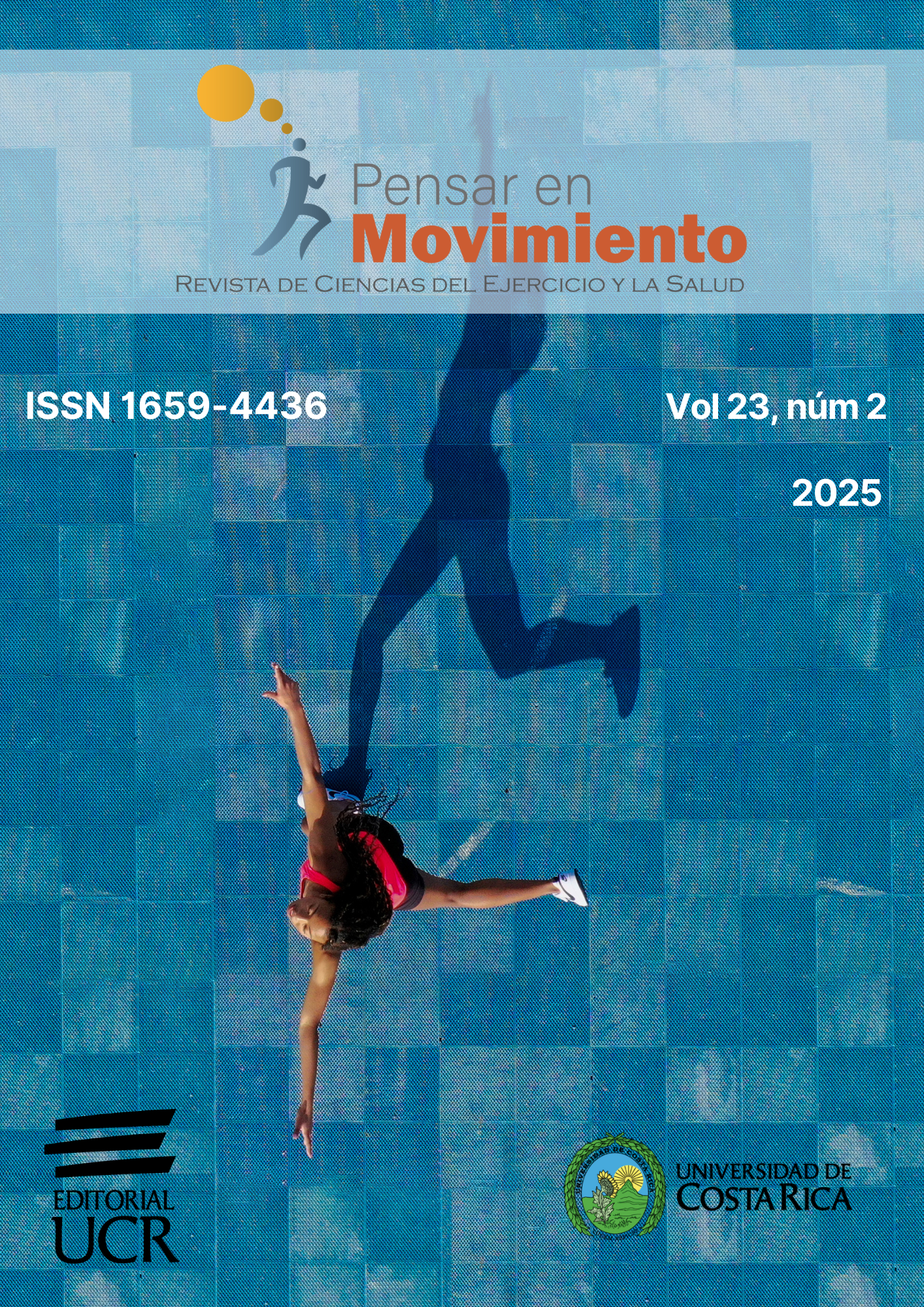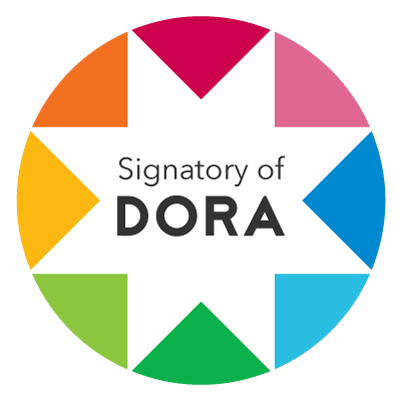Aprendizaje motor en las ciencias del movimiento humano: un análisis bibliométrico
DOI:
https://doi.org/10.15517/1qke4780Palabras clave:
producción científica, estudios bibliométricos, movimiento humano, comportamiento motorResumen
El aumento de la producción científica en diversas áreas del movimiento humano brinda la oportunidad de realizar estudios bibliométricos en el área de aprendizaje motor. El objetivo del presente estudio fue sistematizar la información publicada en el área de aprendizaje motor entre los años 2000 y 2024, por medio de un análisis bibliométrico. Se seleccionaron 570 estudios relevantes en la temática, publicados entre 2000 y 2024 por medio de una búsqueda en la base de datos de Scopus. Se llevó a cabo un análisis de métricas de rendimiento y estructura que toma en cuenta: total de publicaciones, cantidad de documentos, tasa de crecimiento anual de artículos publicados, afiliaciones y autores más relevantes, redes de colaboración, más citados a nivel mundial, tendencias temáticas, entre otros. De los 570 documentos analizados se identificó a G. Wulf como la autora más relevante, la Universidad de Toronto como la afiliación más relevante, Estados Unidos de América como el país con mayor producción científica. El estudio más citado aborda un tema relacionado con el problema de grados de libertad. En conclusión, este trabajo brinda una perspectiva de la producción científica de la temática relacionada al aprendizaje motor en los últimos 25 años.
Descargas
Referencias
Aria, M., y Cuccurullo, C. (2017). bibliometrix: An R-tool for comprehensive science mapping analysis. Journal of Informetrics, 11(4), 959-975. https://doi.org/10.1016/j.joi.2017.08.007
Brady, F. (2004). Contextual Interference: A Meta-analytic study. Perceptual and motor skills, 99(1). https://doi.org/10.2466/pms.99.1.116-126
Bressel, E., Yonker, J. C., Kras, J., y Heath, E. M. (2007). Comparison of static and dynamic balance in female collegiate soccer, basketball, and gymnastics athletes. Journal of athletic training, 42(1), 42–46. https://pubmed.ncbi.nlm.nih.gov/17597942/
Carter, M. J., y Ste-Marie, D. M. (2017). An interpolated activity during the knowledge-of-results delay interval eliminates the learning advantages of self-controlled feedback schedules. Psychological Research, 81(2), 399-406. https://doi.org/10.1007/s00426-016-0757-2
Chua, L.-K., Jimenez-Diaz, J., Lewthwaite, R., Kim, T., y Wulf, G. (2021). Superiority of external attentional focus for motor performance and learning: Systematic reviews and meta-analyses. Psychological Bulletin, 147(6), 618-645. https://doi.org/10.1037/bul0000335
Donthu, N., Kumar, S., Mukherjee, D., Pandey, N., y Lim, W. M. (2021). How to conduct a bibliometric analysis: An overview and guidelines. Journal of Business Research, 133, 285-296. https://doi.org/10.1016/j.jbusres.2021.04.070
Ferreira, B. P., Malloy-Diniz, L. F., Parma, J. O., Nogueira, N. G. H. M., Apolinário-Souza, T., Ugrinowitsch, H., y Lage, G. M. (2018). Self-Controlled Feedback and Learner Impulsivity in Sequential Motor Learning. Perceptual and Motor Skills, 126(1), 157-179. https://doi.org/10.1177/0031512518807341
Jiménez-Díaz, J. (2020). Aprendizaje motor y feedback: Una revisión de literatura. Revista Iberoamericana de Ciencias de la Actividad Física y el Deporte, 9(3), 42-58. https://doi.org/10.24310/riccafd.2020.v9i3.6385
Jiménez-Diaz, J., Chaves-Castro, K., y Morera-Castro, M. (2021). Effect of Self-Controlled and Regulated Feedback on Motor Skill Performance and Learning: A Meta-Analytic Study. Journal of Motor Behavior, 53(3), 385-398. https://doi.org/10.1080/00222895.2020.1782825
Jiménez-Díaz, J., Chaves-Castro, K., Morera-Castro, M., Portuguez-Molina, P., y Morales-Scholz, G. (2024). Physical practice, mental practice or both: A systematic review with meta-analysis. Journal of Physical Education and Human Movement, 5(2), 1-14. https://doi.org/10.24310/jpehm.5.2.2023.17875
Kim, T., Jimenez-Diaz, J., y Chen, J. (2017). The effect of attentional focus in balancing tasks: A systematic review with meta-analysis. Journal of Human Sport and Exercise, 12(2). https://doi.org/10.14198/jhse.2017.122.22
Latash, M. L., Scholz, J. P., y Schöner, G. (2007). Toward a new theory of motor synergies. Motor Control, 11(3), 276-308. https://doi.org/10.1123/mcj.11.3.276
Macama Guerrero, N. A., y Monroy Bohorquez, D. M. (2018). Efectos de la realidad virtual sobre el aprendizaje motor en niños con parálisis cerebral. Revisión de literatura. [Proyecto de investigación para optar al título de especialista en fisioterapia de neurorrehabilitación, Institución Universitaria Escuela Colombiana de Rehabilitación, Facultad de Fisioterapia]. Repositorio Institucional ECR. https://repositorio.ecr.edu.co/server/api/core/bitstreams/e3cce37e-e72b-41fa-9f94-55dee7b68697/content
Magill, R. A. (1990). Motor Learning Is Meaningful for Physical Educators. QUEST, 42, 126-133. https://www.tandfonline.com/doi/abs/10.1080/00336297.1990.10483984
Magill, R. A., y Anderson, D. (2013). Motor Learning and Control: Concepts and Applications. (10th ed.). McGraw-Hill Higher Education.
Merians, A. S., Jack, D., Boian, R., Tremaine, M., Burdea, G. C., Adamovich, S. V., Recce, M., y Poizner, H. (2002). Virtual reality–augmented rehabilitation for patients following stroke. Physical Therapy, 82(9), 898-915. https://doi.org/10.1093/ptj/82.9.898
Ramos, M. B., Koterba, E., Rosi Júnior, J., Teixeira, M. J., y Figueiredo, E. G. (2019). A Bibliometric Analysis of the Most Cited Articles in Neurocritical Care Research. Neurocritical Care, 31(2), 365-372. https://doi.org/10.1007/s12028-019-00731-6
Schmidt, R. A., y Lee, T. D. (2013). Motor Learning and Performance: From Principles to Application. (6th ed.). Human Kinetics. van Eck, N. J., Waltman, L., Dekker, R., y
Shea, C. H., y Wright, D. L. (1997). An Introduction to Human Movement: The Sciences of Physical Education. Allyn and Bacon.
van den Berg, J. (2010). A comparison of two techniques for bibliometric mapping: Multidimensional scaling and VOS. Journal of the American Society for Information Science and Technology, 61(12), 2405-2416. https://doi.org/10.1002/asi.21421
Wulf, G., y Lewthwaite, R. (2016). Optimizing performance through intrinsic motivation and attention for learning: The OPTIMAL theory of motor learning. Psychonomic Bulletin & Review, 23(5), 1382-1414. https://doi.org/10.3758/s13423-015-0999-9
Wulf, G., Shea, C., y Lewthwaite, R. (2010). Motor skill learning and performance: A review of influential factors. Medical Education, 44(1), 75-84. https://doi.org/10.1111/j.1365-2923.2009.03421.x
Xu, F., Xu, J., Zhou, D., Xie, H., y Liu, X. (2022). A Bibliometric and Visualization Analysis of Motor Learning in Preschoolers and Children over the Last 15 Years. Healthcare, 10(8), 1415. https://doi.org/10.3390/healthcare10081415







